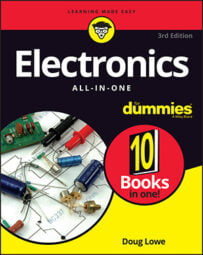One of the great things about Disneyland is that sometimes the long line you have to wait in to go on a particular ride is almost as good as the ride itself. One of the best examples of this is the famous Indiana Jones Adventure: Temple of the Forbidden Eye. Just outside of an ancient temple, you pass by a rickety steam-powered generator that is barely running.
The clickity-clickity sound of the generator alternately grows louder and softer as the generator sputters and threatens. Once inside the temple, you pass through narrow tunnels and creepy caverns that are lit overhead by lights that appear to be powered by the rickety generator. The lights flicker and dim, then grow brighter for a moment, then flicker and dim again in sync with the laboring generator.
A color organ is an electronic circuit you can use to create this creepy lighting effect, including lighting the narrow passageways in haunted house (or tomb) at Halloween or to create a thunderstorm in your front yard to add the right ambiance to your haunted Halloween graveyard. And the same circuit creates a spooky red heartbeat in the chest of a plastic skeleton that stands watch over the scene.
This circuit requires that you work with line-level voltages (120 VAC), so it's potentially dangerous. The circuit is designed with safeguards, but you must be careful to not bypass them. You should inspect any color organ project every time you use it to make sure none of the wiring has come loose or frayed, and you must never work on a circuit while it's plugged in.

